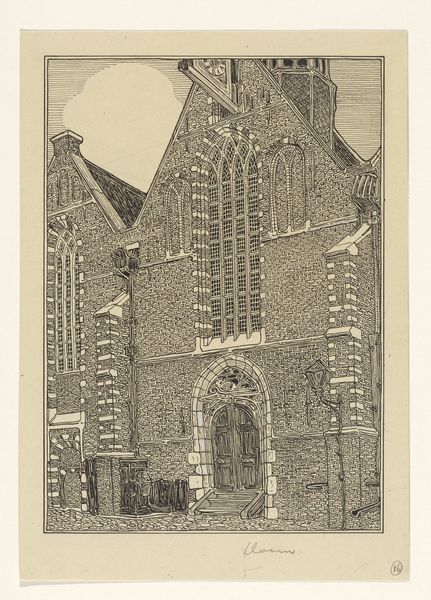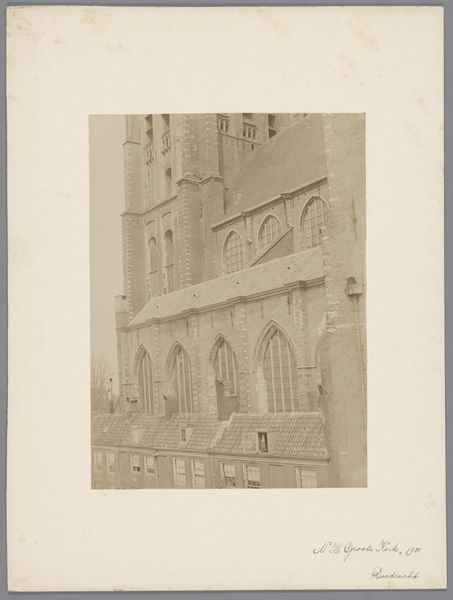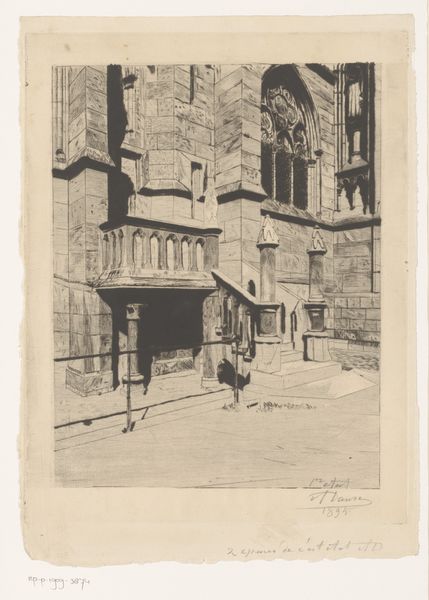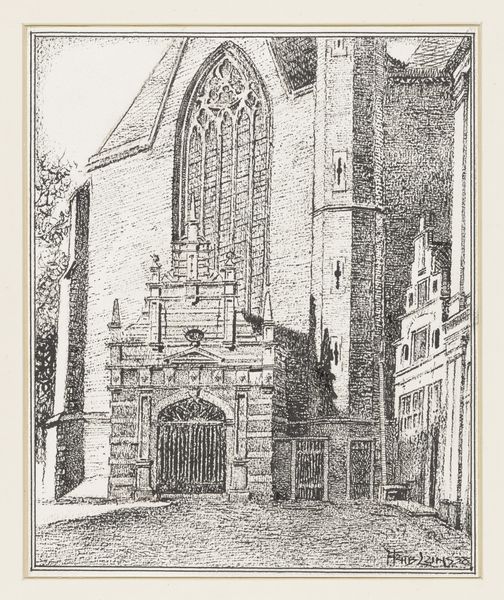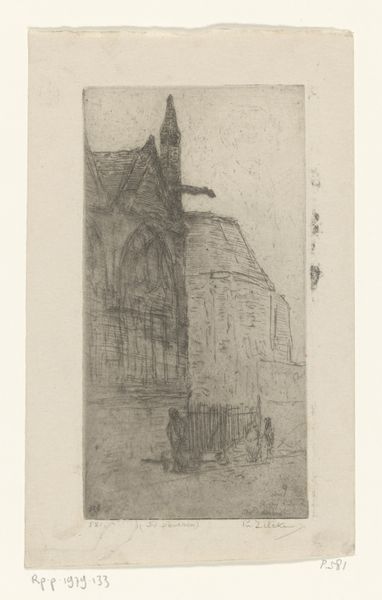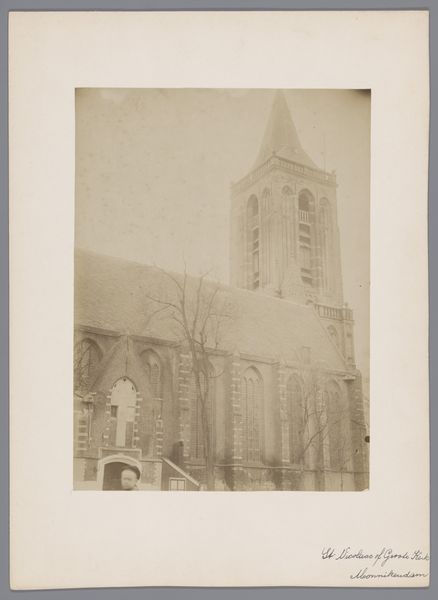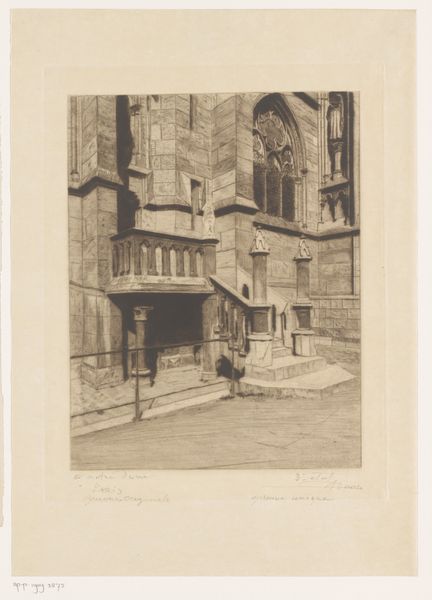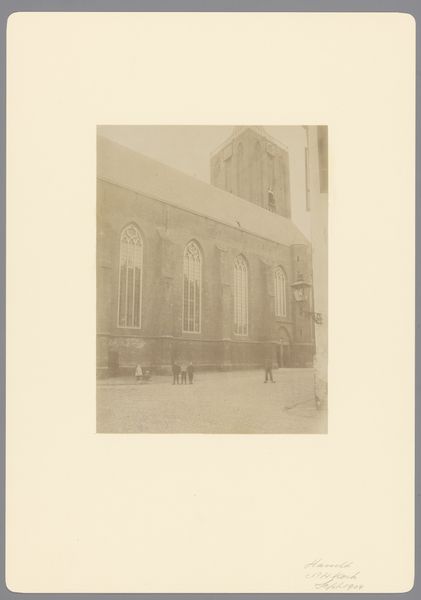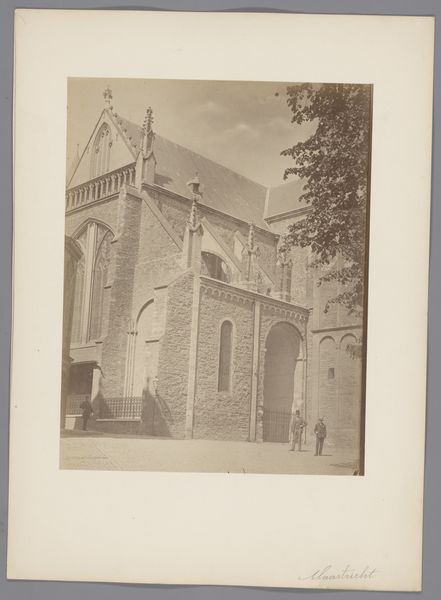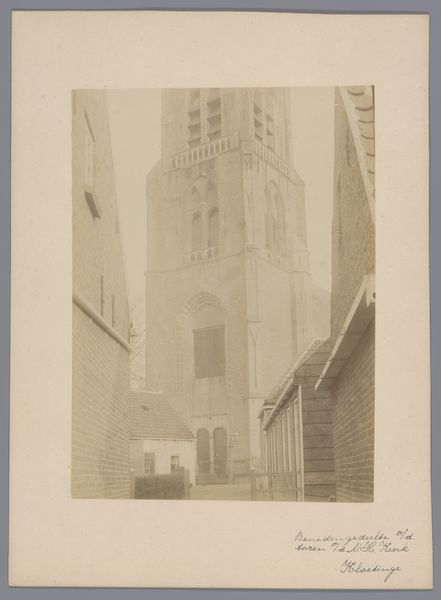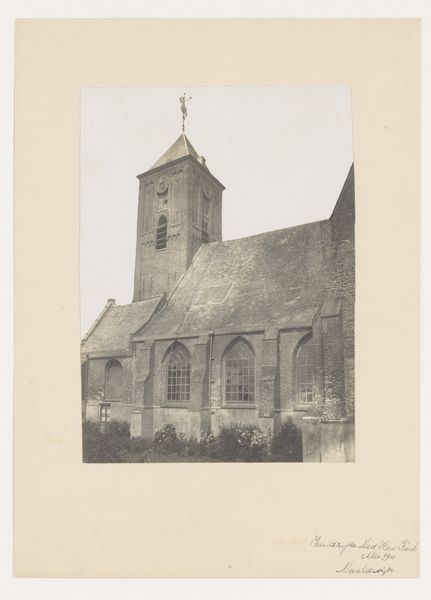
drawing, paper, ink, pen
#
drawing
#
pen drawing
#
paper
#
ink
#
pen
#
cityscape
#
realism
Dimensions: height 240 mm, width 168 mm
Copyright: Rijks Museum: Open Domain
Editor: So, this is Wijnand Otto Jan Nieuwenkamp's "Westelijke gevel van de Noorderkerk te Hoorn," created before 1897. It's a pen and ink drawing on paper, quite detailed. The building appears formidable and aged. What strikes you about it? Curator: It's interesting to consider Nieuwenkamp’s labour in creating such a precise representation with pen and ink. Think about the social context: What drove the artist to meticulously document this particular facade? Was it commissioned? Or was it driven by an interest in representing Hoorn’s architectural and cultural identity for a rising middle class consuming images of their surroundings? The drawing reduces architecture into a commodity, available for circulation. Editor: That's a fascinating point about the architectural image as commodity. I hadn't considered the market forces. Does the choice of pen and ink contribute to that at all? Curator: Absolutely. The relative ease of reproduction via printing processes compared to, say, an oil painting, makes it more accessible and suitable for wider consumption. We see here not just a building, but evidence of a developing image economy where representations of places are readily exchanged and consumed. Think also about the role of paper; it allows the pen and ink strokes. Its quality reflects something of the culture of the time. Editor: That makes a lot of sense. So, the medium and materials aren't just about the artwork itself, but about its place in a wider system of production and consumption. Curator: Precisely. And how the drawing itself reflects labour. Editor: That's given me a lot to think about. Thanks for opening my eyes to a different perspective!
Comments
No comments
Be the first to comment and join the conversation on the ultimate creative platform.
